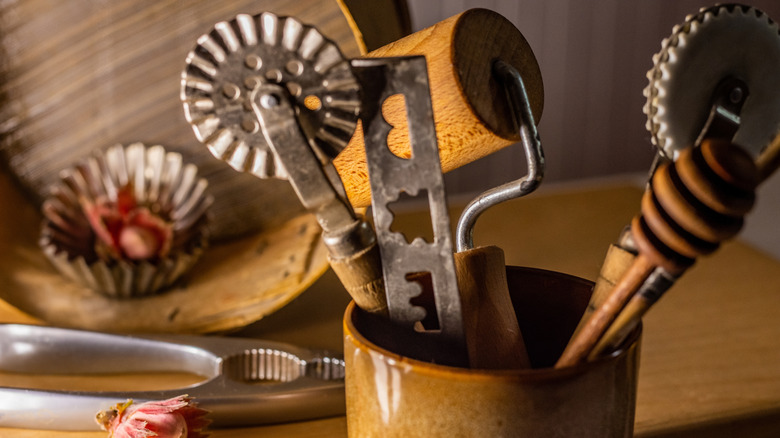The Old-School Electric Kitchen Tool Boomers Love
Many once-popular kitchen tools fell out of vogue because something new came along that made them obsolete. However, others remained the best option for a job, but for whatever reason, weren't picked up by the next generation. Amongst all the electric kitchen tools boomers love, the electric knife is, by far, the most useful.
An electric knife is essentially a food-safe reciprocating saw with a pair of serrated blades, linked together, that rapidly move back and forth. This means that all you have to do is slowly move the knife while it cuts, eliminating any need for sawing or hacking. It first came about in 1964, when Jerome L. Murray filed his first patent. However, the popularity of the tool soon took off like a rocket, prompting major retailers like Black & Decker and KitchenAid to come up with their own designs. By 1971, one in three American families owned one and General Electric saw over a billion dollars in annual sales of just this one product.
While an electric knife is great for keeping your meat looking great, it's also ideal for preserving moisture in cooked meats. Squeezing, tearing, and sawing at cooked meat wrings juices out of the muscle fibers, creating a dryer product. An electric knife, however, makes clean slices of just about any protein that even an expert chef would be jealous of.
The types of meat you should use an electric knife on
If you want to use an electric knife properly, only use it for heavy-duty jobs, like roasts, or where there aren't any delicate bones. While it may be tempting to filet a fish or remove a chicken breast with it, an electric knife can shatter the delicate pin and rib bones, making them harder to remove later.
For cooked meat, it's best to use an electric knife only when there are either no bones or, at most, large ones it has no hope of breaking. It passes easily between ribs or over the surface of a shank, just be sure to stop immediately and turn it off if you feel it catch. It's also great at keeping chicken breast moist once it's off the bird, creating clean, shapely medallions. If you need a more precise job done, like cutting flank steak against the grain, it's easy to set the blade against your meat, turn it on, and let it slowly cut in the perfect direction with minimal disruption to the muscle fibers.
Raw meat is typically tougher than cooked, so you'll want to cut it quite slowly. You won't be able to perfectly replicate the shaved steak of an Asian grocery store, but you can transform primal and subprimal cuts into plenty of steaks. Avoid using your electric knife to cut through joints, like separating chicken thighs from legs, as the cartilage and other connective tissues can quickly dull the blades.


